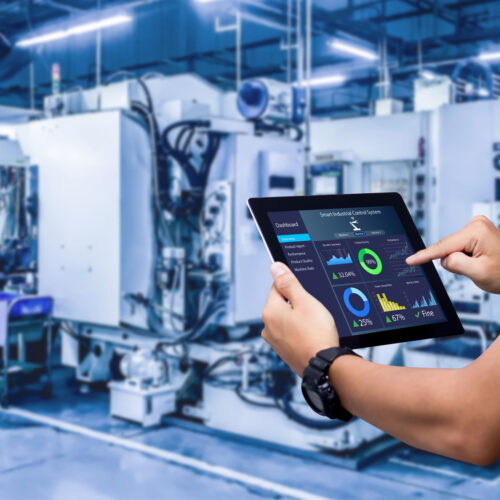The sustainable transfer and storage of data is of great importance. This process faces challenges depending on the volume and type of data, time frame, geographical location, distance, and energy consumption. Methods for data transfer and the design and implementation of appropriate infrastructures are determined based on these needs.
Sensors & Machine Data Acquisition
The use of sensors and machine data acquisition systems (PLCs) for data collection and transfer to central systems plays a vital role in automating and optimizing industrial processes.
Gateway/Endpoints Connectivity
Optimal and stable connectivity of equipment to the network is achieved through various interfaces and protocols, including both wired and wireless communications. This enables systems to communicate quickly and reliably with each other. Some of these protocols include serial, Modbus, CAN, Ethernet, Wi-Fi, Bluetooth, LoRa, NB-IoT, and 4G LTE-m.
Real-time
Real-time data transfer is essential for processing, controlling systems, and online monitoring. This type of transfer enables quick responses to changes and immediate decision-making.
Remote Operations
System stability, maintenance, and remote support are crucial for data transfer systems, requiring the use of new-generation communications and innovative equipment. This capability allows for the management and resolution of system issues without the need for physical presence, thereby increasing efficiency and productivity.
Data Security
Data security is one of the most critical aspects of data transfer and storage. The use of advanced encryption methods and security protocols is necessary to protect data against unauthorized access.
Low Power Consumption
Low power consumption in data transfer and storage processes is essential for reducing costs and preserving the environment. Using high-energy-efficiency equipment and designing low-power systems can help achieve this goal.
Costs
Reducing the costs of data transfer and storage is another challenge. Choosing efficient and cost-effective solutions for data transfer and storage can help reduce operational expenses.




